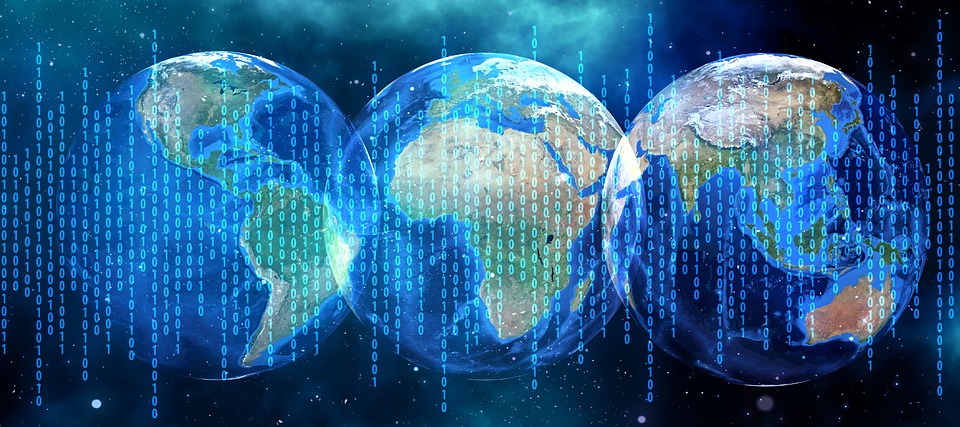
Sanger, David E. “Japan’s Scratch-Pad Computers.” New York Times [New York] 24 Mar. 1990: 1. Print.
‘Static’ and ‘Dynamic’ are two different styles of “stylus system” interfaces. “Pen Computers,” also known as “Smart Paper,” is a technology that was developed in the late 1980’s and since was added to the market by initial investors like Sony and Canon in the early 1990’s. The computer technology industry at the time this article was printed was starving for “A New Way to Communicate,” especially in the realm of conveying messages in Asian cultures. Japanese businesses struggled to type characters into machines and as a result needed a new form to record a written message. For $500-2,300 a consumer could buy a 4-by-6inch LCD, battery-operated, device that would allow one to write [draw] and read electronic files. These machines were a bit problematic and finicky when it came to character recognition, but developers were certain that in time the technology would expand into a better working product.
Whereas a static machine was designed to analyze a character after it was written, a dynamic machine would follow proper stroke order to match a written character to a bank of possibilities. The West obviously was not overly concerned with the ability to create characters on a personal computer, causing little interest in Sony’s Palmtop or Canon’s AI Note. Despite this discordant ideal of product development, the United States was still expected to take in about 12 million machines in the year 1990. Japan, being about half the economical size was expected to take in about 1.6 million machines that year. Moving forward just over two decades in time, it is intriguing to see how the talk of technology has evolved. David Sanger of the New York Times does a fine job capturing the appeal of new consumer products while justifying their relative relevance in this short special article written in March of 1990. Shingo Tamura, a leader of the development team at Sony admits, ‘‘this has been a dream for us, because keyboards are so difficult.”
St.Amant, Kirk. “Considering China: A Perspective for Technical Communicators.” Technical Communication 4.4 (2001): 385. Print.
Kirk St.Amant’s educational journal enlightened readers of the unjust work environment of those who worked in Chinese IPod factories. St.Amant also provided three modes of guidance dealing with foreign trade as it pertains to China: ethical law, economic history, and communication– the three words mentioned that are closely related in understanding the Chinese business mindset. 1.) 关系 (guanxi) 2.) 禮 (Li) 3.) 面子 (mianzi). The literal translations do not make complete sense but can be comprehended from contextual usage. For example 关系 has a meaning that translates into ‘relationship,’ an obvious critical aspect of any business. 禮 in Chinese philosophy has to do with ritual, or propriety. This can be extrapolated into something more concise, such as the term “social harmony”. Lastly 面子 has everything to do with its literal meaning, and its literal meaning is “Face.” One may think of political face or professional face. For example, making sure that ones home training and standards are not only being practiced with consistent positive intention but that they match those of said business or professional partner. St.Amant does a fine job of introducing this concept from a textbook called Encountering the Chinese: A guide for Americans (1999). The majority of St.Amant’s article shocks its audience with staggering numbers and statistical information which is made apparent when St.Amant mentions the average annual salary of the factory workers, or notes that employees made about monthly $50 USD. Albeit the article was released a decade ago, it expounds upon the readers level of interest to see the correspondence and accuracy of projections made then.
Young, Jeffery R. “Supercomputers Let Up on Speed.” Chronicle of Higher Education 57.31 (2011): A1-4.
Suddenly the “Race for Space” does not seem as lofty as it was thought to be in the 1960’s. True, countries like China and the United States are continually in competition in athletic events; for example, there are now races being held in the cyber world. Supercomputers like the U.S.’ Blue Waters, competes with Chinese supercomputer Tianhe-1A. The question Young poses is whether the benchmarking test for supercomputers is really adequate in grading a computer performance. For example, several scientists argue that these tests only rate a computer on the speed it takes to solve algebraic equations, when the computers were designed for so much more. Jack Dongarra of the Innovative Computing Laboratory at the University of Tennessee at Knoxville claims, “These computers are complicated, and they have many facets, and we should evaluate the different components that go into the systems.” Ad hoc China holds the number one slot for having the world’s fastest supercomputer according to the Top500 and their testing criteria. The United States falls in second place with Jaguar, and fifth place with Hopper. Whereas China holds down third place with Nebulae, Japan accepts fourth place with its design TSUBAME 2.0.
The question of why researchers even need super computers is examined and several opinions are gathered on the matter. We are also taken on a tour of Blue Water–that is once we can get passed the retinal-scan and weight-station security. Comparing foreign technologies with that of the United States fairs worthy of examination: “I used to say that in the high-performance computing race, the U.S. was laps ahead [of China],” says Mr. Dan Reed, of Microsoft Research, “Now it’s steps ahead.”
Barboza, David, and Gu Jinglu. “In China, Apple Finds Market’s Sweet Spot.” New York Times [New York] 25 July 2011: 1. Print.
John Quelch head of the China Europe International Business School in Shanghai declares, “Apple has done what Google and Facebook cannot do: become No. 1 in China.” Chinese government has blocked certain Internet protocols, such as Youtube and Facebook, which makes this statement presumably pretentious. China’s expansion of Apple Stores in the mainland has proven to be a more than lucrative maneuver. Essentially, Apple’s presence in China, beyond factories, has made the corporate identity a household name in Beijing and Shanghai. These two stores alone are among the four most highly trafficked Apple stores globally. A week prior to the publication of this article revealed that Apple’s sales in China reached 3.8 billion dollars in its third quarter. The Shanghai Apple Store is roughly 16,000 square feet and is already apparently too small for all intents and purposes.
Apple plans on opening a third store in the area to accommodate the Chinese consumer as success of the Apple store in mainland China has exceeded that of the Fifth Avenue Apple Store in Manhattan which happens to be open 24 hrs. The worldwide fanaticism of Apple products has inspired several individuals to express jubilance more recently China. For instance, two young brothers, ages 22 & 24 years-old, programming iPods to act as smart phones, to an even younger 19-year-old male replicating his own IPad using parts from an old laptop. At this point Apple has increased in popularity to the degree that counterfeit operations have begun popping up on the radar, which are now being investigated. The article’s rhetorical position outlines in greater detail the infamy of the Apple Corporation by tapping into the Chinese market; interviewing a 19-year-old consumer who promises they will buy the latest iPhone 5 when it arrives regardless of cost. “I have many Apple products, like Touch, iPod, iPad 2 and MacBook…I don’t have an iPhone but I’m waiting for the fifth generation. I will come to the Apple Store to buy it; it doesn’t matter how much it costs.”
Geller, Tom. “Supercomputing’s Exaflop Target.” Communications of the ACM 54.8 (2011): 16-18. DOI. 10.1145/197854.1978549.
Genomics is a branch of molecular biology that investigates things like function, structure and the study of genomes. Satoshi Matsuoka, director of the Computing Infrastructure Division at the Global Scientific Information and Computing Center of the Tokyo Institute of Technology, explains, “You can’t do genomics without very large supercomputers. Because of genomics, we have new drugs, ways of diagnosing disease, and crime investigation techniques.” In June of 2011, Japan leveled up from fourth place on the Top500 chart for super computers beating out China’s Tianhe-1A, which had a score of 2.6 petaflops with their score, over three times the speed demonstrating 8.2 petaflops. A petaflop is a measurement used to express an exchange of operations. To be specific, one (1) petaflop is a [1] quadrillion floating-point operations per second. A petaflop is the new popular measurement for super computers, whereas; gigaflops was the benchmark of the 90’s and teraflops in the start of the millennium.
When Japan’s K Computer received first place in the Top500, president Obama was challenged, moreover, pleaded to by twelve senators to help fund a supercomputer that could reach 1,000 petaflops (1 exaflop) before someone else does. In a letter written by these twelve senators they made reference to Tianhe-1A with direct implications, stating “the race is on… Our global competitors in Asia and Europe are already at work on exascale computing technology… we cannot afford to risk our leadership position in computational sciences.”
Sumit Gupta, a products manager at NVIDA had this to say. “If you peek a little bit further into graphics problems, they look a lot like super-computing problems.” NVIDA is an extremely popular graphics processing unit (GPU) developer. The average consumer typically has either a Radeon graphics card or a NVIDIA in their home computer. Gupta goes on to say, “Modeling graphics is the same as modeling molecule movement in a chemical process.” Essentially GPUs have more cores than CPUs; however, a home computer or supercomputer requires having both processors to function.
Finally, Japan’s K Computer has 68,554 octet core processors for the CPU, which calculates to 548,352 cores, which has its good and bad qualities. It is extremely fast but requires a lot of energy to perform, being synonymous to the amount of energy required to power 10,000 homes. This leads to an energy bill of about 10 million dollars annually. The United States still holds the record for have the most energy efficient machine known as BlueGene/Q. Matsuoka prophesizes “[We] could go to exascale in the next 10 years.” Jack Dongarra, a computer science professor at University of Tennessee, warns us of the major changes in hardware requirements in algorithms/software and its effects on our ecosystem if we continue on our supercomputer voyage.
